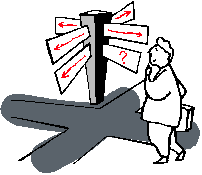|








| |
-
There are many different kinds of dancing that you can do, ranging from
ballroom to line dancing, and from classical ballet to modern tap
dancing. Local folk and ethnic traditions of dancing are also
important.
-
More detailed information on
the different types of dancing can be obtained from the various specialist
organisations listed below.
-
Some
dancing is just done for fun and/or exercise. Dance as a form of exercise is also covered under movement
and dance.
-
Other groups work
towards local performances, competitions or exams.
|
|
Danceservice UK www.danceservice.co.uk/
British Ballet Organisation 0208 748 1241
Ballroom Dancers' Federation online www.bdf.org/BDFwelcome.htm
Ceroc UK www.ceroc.com/
DanceSport UK www.dancesport.uk.com/
Swingland! www.swingland.com/
Club Salsa www.clubsalsa.com/
Kickit Line Dance UK www.geocities.com/Nashville/Ranch/3081/Page2.html
Salsa Beat www.salsabeat.freeserve.co.uk/main.htm
Society for International Folk Dancing www.sifd.org/SIFDhome.htm
Dance Expression www.dance-expression.co.uk
Dancing Dance www.dancingdance.com/
|
Dance News
The Dancing Times
The Ballroom Dancing Times |
-
Find a local group
or club for the type of dance that interests you (see organisations above).
-
Take a class or course at your local
club, dance studio or adult education centre.
-
Consult books or magazines
on different types of dancing.
-
Check in your local library/paper,
dance studio or education centre for more information.
|
Skills and people
-
Everyone, whatever their
age or sex, can dance. But, some forms of dancing are more energetic and skillful than
others.
-
Ballet in particular is usually done by younger people,
whereas line, folk and ballroom dancing are often done by older people,
and are generally easier to take up.
-
Most forms of dancing require other people, either a partner or a group
with whom to perform the prescribed movements.
-
You can practice
movements on your own, but people usually join a dance group or
class. This gives access to a leader or teacher and to the music
that usually accompanies dancing.
Equipment or clothing
-
At the beginning, suitable footwear and free moving clothes are all
that are required.
-
But more serious dancing and membership of a
group may involve special costumes, particularly if performances or
competitions are involved.
A place or facilities
-
Many dance groups meet in local halls or schools and colleges.
The essential is a suitable floor and a space large enough for the groups
to move around.
-
Dance schools may have their own studios, with
special flooring, mirrors and changing facilities.
|
|
